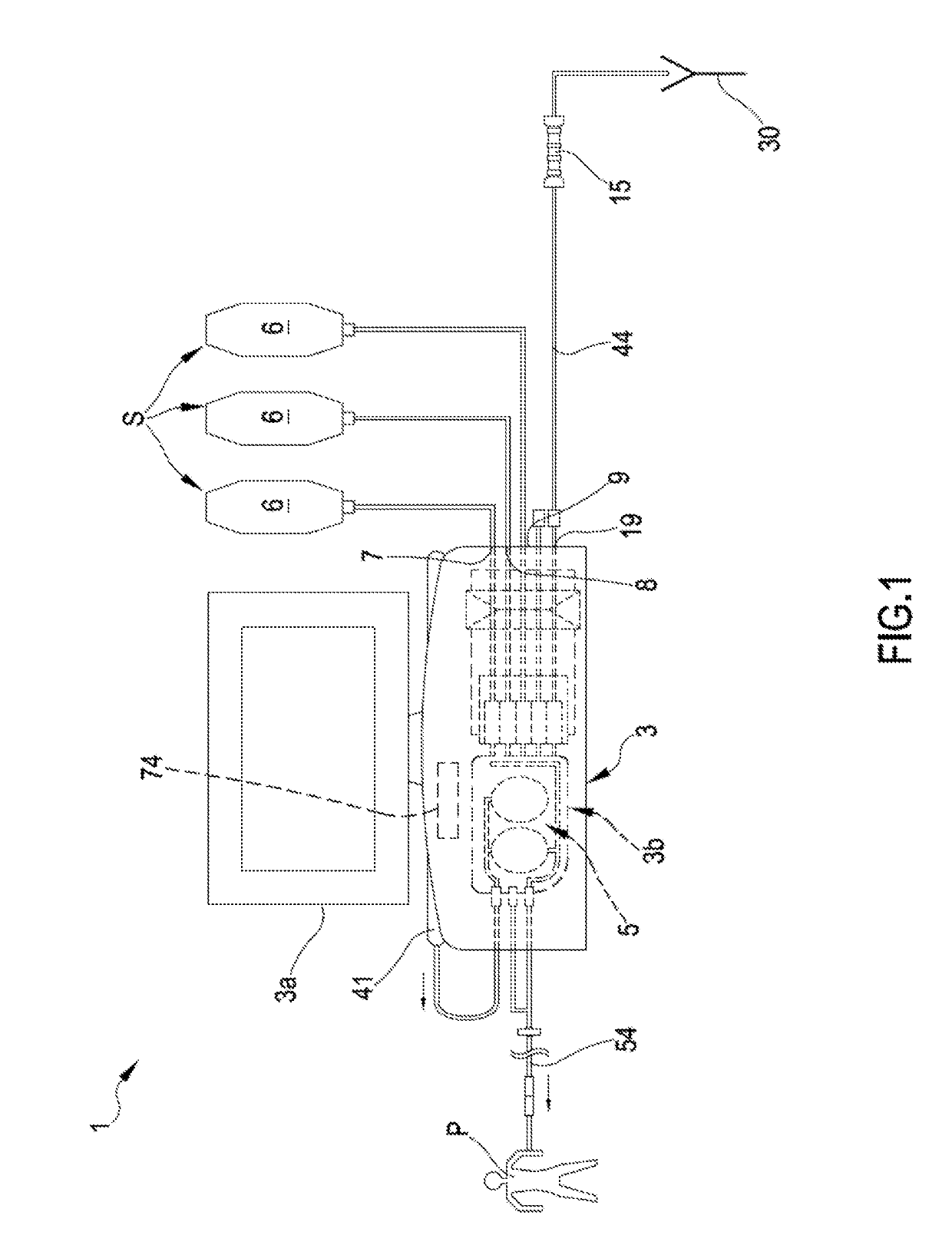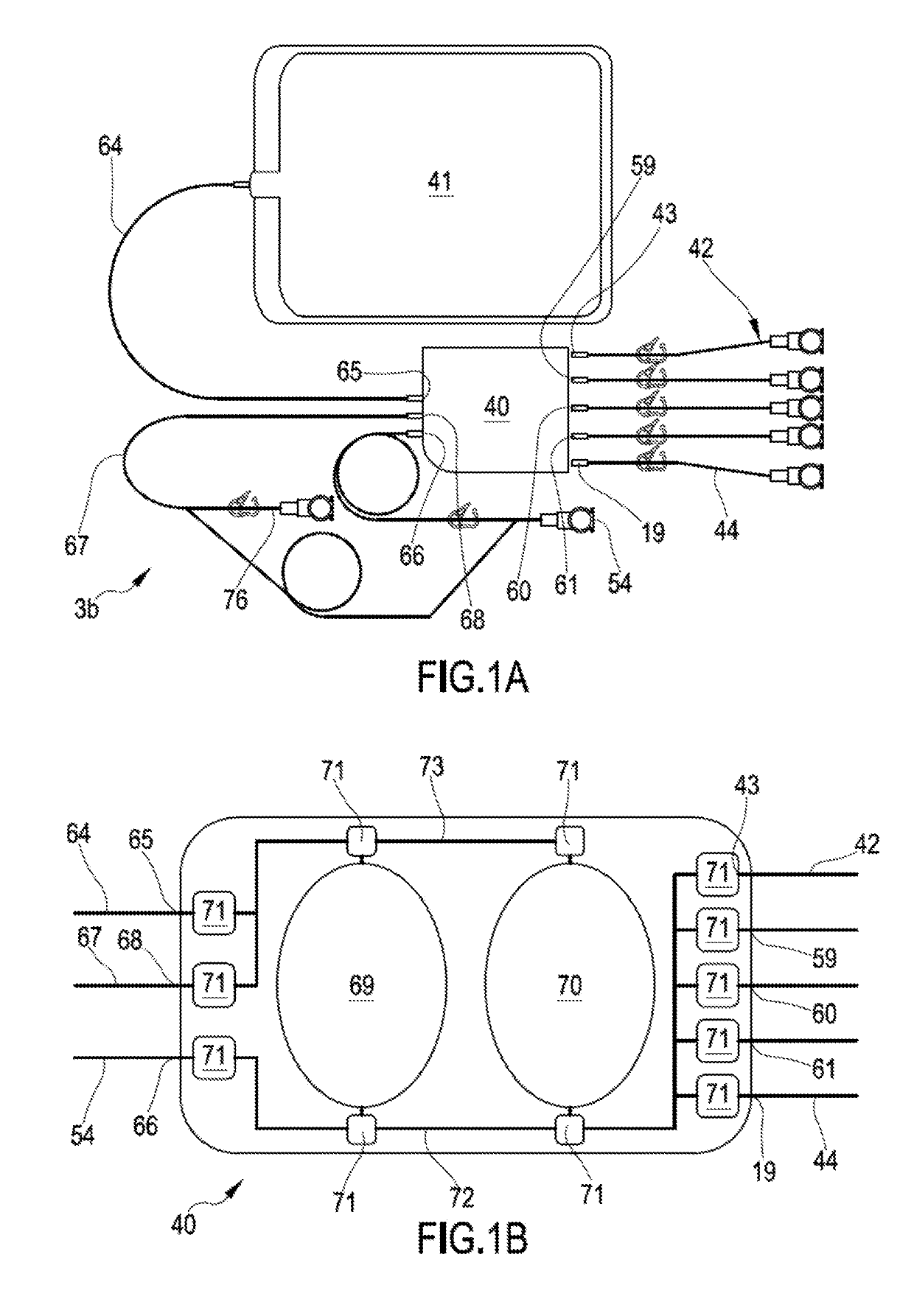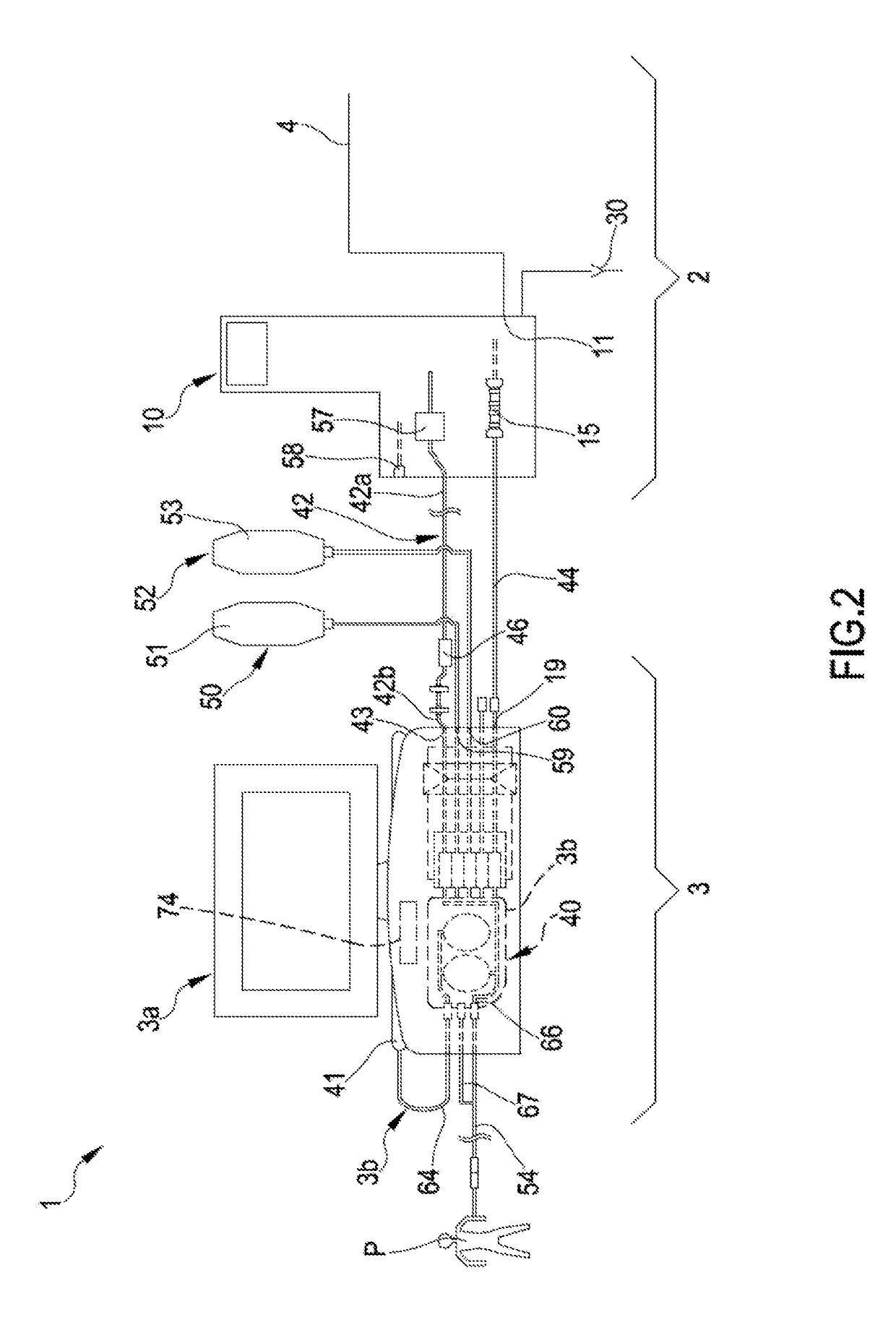Apparatus for providing automated peritoneal dialysis
a technology for peritoneal dialysis and automatic operation, which is applied in the field of automatic peritoneal dialysis (apd), can solve the problems of inability to achieve manual peritoneal dialysis, and inability to meet the patient's needs
- Summary
- Abstract
- Description
- Claims
- Application Information
AI Technical Summary
Benefits of technology
Problems solved by technology
Method used
Image
Examples
optimization examples
[0324]In FIGS. 11 and 12, some possible optimization examples are shown.
[0325]FIG. 11, upper graphic shows a “standard prescription” for peritoneal dialysis of 6×2 L 1.36% glucose with a duration of 9 hours (540 min). The treatment session consists of 6 identical cycles and is a night session.
[0326]Each of the fill phases F (with a treatment fluid having 1.36% strength in glucose) fills the patient peritoneal cavity up to a bit more than 2 liters of treatment fluid.
[0327]During each dwell phase DW the fluid volume in the peritoneal cavity increases since fluids moves from the patient body to the peritoneal cavity.
[0328]The drain phase DR is then shown having two slopes DR1, DR2 corresponding to the initial fast drain step and to the final slow drain step.
[0329]Six identical cycles in the same treatment session are shown having substantially the same shape (same effects).
[0330]The corresponding transport parameters in terms of urea removal, UF, glucose absorption are shown in Table 3...
PUM
 Login to View More
Login to View More Abstract
Description
Claims
Application Information
 Login to View More
Login to View More - R&D
- Intellectual Property
- Life Sciences
- Materials
- Tech Scout
- Unparalleled Data Quality
- Higher Quality Content
- 60% Fewer Hallucinations
Browse by: Latest US Patents, China's latest patents, Technical Efficacy Thesaurus, Application Domain, Technology Topic, Popular Technical Reports.
© 2025 PatSnap. All rights reserved.Legal|Privacy policy|Modern Slavery Act Transparency Statement|Sitemap|About US| Contact US: help@patsnap.com



